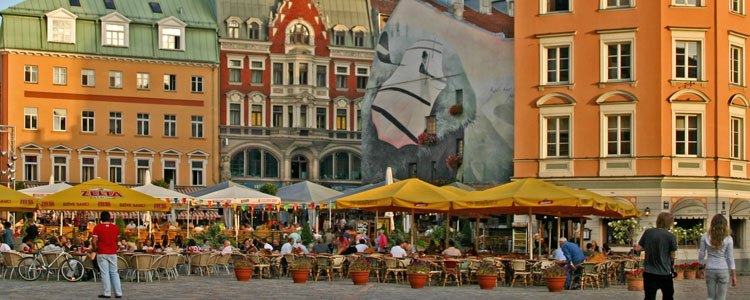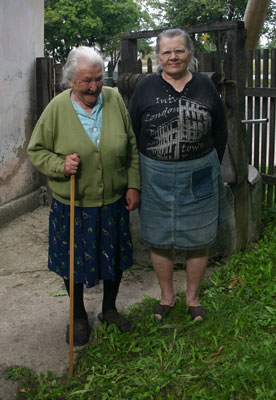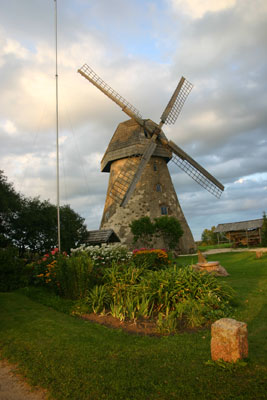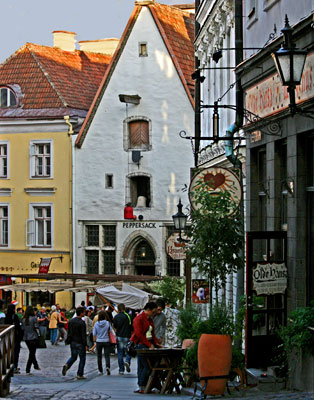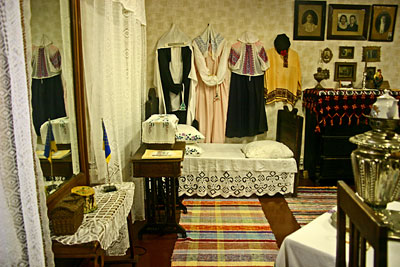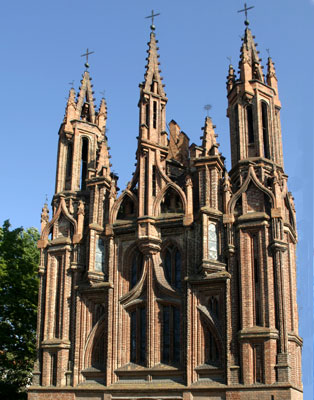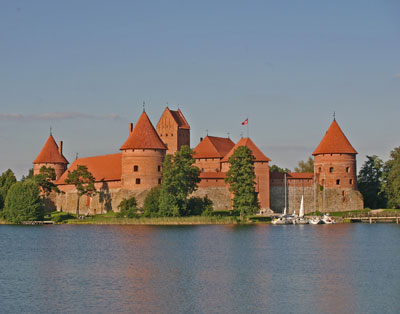Contemplations and caveats for a self-drive journey through the Baltic region
by Joyce Bruck, Ocean Ridge, FL
My summer journey through the Baltic countries of Finland, Estonia, Latvia and Lithuania was both interesting and exciting — with periods of pure frustration.
Planning the trip
About six weeks before leaving, I made flight reservations for my cousin June, with whom I would be traveling. On Expedia.com, I found her a round-trip flight from Aberdeen, Scotland, to Helsinki for the terrific price of $307. My flights were booked with American Airlines frequent-flyer miles, in conjunction with Finnair.
It took me over a month of intensive work to map out our trip and make the hotel reservations. To plan the itinerary, I used a map of Scandinavia from AAA; a driving plan called “Round the Baltic in 12 Days,” which I had gotten from the Internet (www.celotajs.lv); ITN articles on the Baltics (Jan ’09, pg. 62 & June ’09, pg. 6), and my trusty guidebook.
The 2009 Eyewitness Travel guidebook “Estonia, Latvia & Lithuania” was critical to the selection and booking of hotels and in choosing restaurants. It was also our bible for choosing and locating the sites in which we were most interested.
The big challenge was to figure out how much we could travel in one day. My objective was to combine the big capital cities with time in the countryside plus three national parks for a bit of nature.
I had no idea what kind of traveling conditions we would encounter. As it turned out, finding ATMs, gas stations and markets was not a problem. However, some of the villages we wished to visit were as small as a city block.
Many times, the speed limits were not posted, and the driver is expected to know the driving laws in each country. However, the highways were well marked and generally in good condition.
A rough start
On Aug. 20, 2009, I flew out of Miami headed for our 16-day Baltic driving expedition. The plan was to rendezvous with June in Helsinki the next afternoon. At first, everything went well, but after a canceled flight in Toronto that left late the following day, I had lost a day and a half with my cousin.
Once in Helsinki, things started to go better. I immediately caught the Finnair shuttle bus (€5.90, or $7.50) directly to my hotel, the Scandic Continental (phone +46 8 514 20). The shuttle drivers help load and unload passengers’ bags, which can be a big advantage.
Through a Finnish friend, we got a special room rate of €90 ($117) per night, though we paid €125 for a double room on our one-night stay there at the end of our trip. My cousin was waiting as I disembarked the shuttle.
Getting oriented
Later that day, my friend took us on a quick drive through Helsinki, which was an excellent introduction to the city and the old port area. Helsinki is a beautiful city with lots of water, boats and old, charming buildings. Then he dropped us off at Kauppatori, the central marketplace.
The Helsinki Expert tour shop was located on the square, so I thought it best to purchase our ferry tickets to Tallinn there. As we would later learn, that was a mistake. I should have tried the Internet again.
We then walked around the harbor area to get close-up pictures of sites we had seen on our driving tour. My favorite was the magnificent, red-bricked Uspenski Cathedral with its gold onion domes.
Sad to say, while walking downtown I was accosted by a man — when I would not speak to him, he punched me in the ribs. Fortunately, I was near a department store where there was a security guard out front. I made a beeline for the guard, who called for help on his phone. The attacker disappeared quickly, leaving me a little shaken up.
Pulling myself together, I checked a few references in my travel materials to find a place to eat. We wound up at Kosmos (Kalevankatu 3; phone +358 9 647 255), a Fodor’s Choice restaurant, for a lovely dinner (closed Sundays). This Scandinavian restaurant’s interesting past, dating back to 1924, was reflected in its menu and decor.
It took us a while to adjust to the high prices for food. As we would do often during this trip, we shared dishes to reduce the meal cost and enable us to try different menu items.
Here we had mushroom patties and chateaubriand with a red wine sauce, finishing with a dessert of cheesecake with cloudberry sauce (€52.50 plus €7.50 tip, or about $90). I loved the cloudberries and had them whenever they were on the menu.
Day trip
The next day we were driven to the small town of Porvoo, 31 miles east of Helsinki. (You can also get there by bus, boat or train.) The Old Town area was a charming, picturesque place with a 15th-century stone-and-wood cathedral, an 18th-century Town Hall Square and several well-preserved shops.
Among the buildings I saw in the village was the home of J.L. Runeberg, Finland’s national poet. It is now a museum displaying the furnishings as they were in 1877, when he died.
That night and the next we went to a restaurant we discovered close to our hotel and the nearby history museum. June had pizza (€8) and I tried the reindeer (€15), which did not suit my taste though I do like venison.
We noticed the people next to us having a delicious-looking sizzling platter of grilled chicken heaped with potatoes and vegetables, so on our next two visits we shared that platter (about $12 each with dessert).
Finishing up in Finland
The following day we visited the parts of Helsinki we’d missed on our prior expeditions. The trolley line near our hotel took us to the colorful indoor/outdoor Hietalahti market, selling everything from fruit to clothes.
The trolley ticket cost €2.50 and was good for one hour and 15 minutes, so after the market we quickly jumped on another trolley, which took us to Market Square for a crêpe lunch at a stall among the fruit and vegetable stands.
The price of a full-day ticket, good on buses, trams, the metro and local trains, is €6; for a three-day pass it costs €13.60, and for a five-day pass, €20.40. The one-day ticket is sold on the buses and trams, but the tickets covering more days are available only at the railway station, in ticket machines and at the tourist bureau.
After lunch we took a 15-minute boat ride (€3.80, or $4.95, round trip) to visit the 18th-century Suomenlinna Fortress, a UNESCO World Heritage Site. Visitors can take interesting walks through the parks and buildings as well as visit several museums and even a submarine. A guided tour (about $9) begins at the visitors’ center.
We went on our own to see the sites, including some of the fortress’ 105 cannons; the Suomenlinna Church; tunnels; defense walls, and old Russian summer houses. Several cafés dotted the trails. Locals brought blankets to sit on to enjoy the fresh air and panoramic views.
On to Estonia
The next day we left for Tallinn, Estonia, the starting and ending point of our circular drive.
We took a taxi to Helsinki’s pier (€18) to catch the Tallink (fax +372 6409 810) ferry Superstar to Tallinn. We booked the two-hour ferry ride (€136, or $202, for two round-trip tickets) at the Helsinki Expert tour shop off Market Square, as I mentioned earlier.
Helsinki Expert did tell us that we would pay more than we would have if we booked directly online. Still, other passengers suggested we were overcharged. (Online prices start at €104 for the two tickets.)
The worst part was that the walk to the gate was about half a mile. Most people were traveling for just a short period of time, and each had one small piece of baggage. I, on the other hand, was dragging a computer and a bag holding my two cameras and three lenses plus clothing for various types of weather. Had I known, I would have left some of the items at home or at least at the hotel in Helsinki.
On our return trip, the ship was so crowded that we could hardly find a seat.
So be warned: if you take the ferry, travel light, book in advance online and be careful if using a tour company’s booking services.
Exploring Tallinn
Our nice, well-located hotel in Tallinn was the Domina Inn Ilmarine (fax +37 26140901), located near the Fat Margaret gate to Old Town. After the ferry terminal information center contacted Avis for us, our compact, manual-shift car was delivered to our hotel, nearby. (I had picked the hotel [$97 per night], as it was near the ferry and close to the Old Town.)
We then began our walking tour of the city, passing the Estonian Maritime Museum, St. Olav’s Church and the 15th-century renaissance-style House of the Brotherhood of Blackheads. Farther along was the central square and the 14th-century Gothic Town Hall with its medieval dragonhead waterspouts; the Town Hall Pharmacy, established in 1422; the Church of the Holy Spirit; a busy marketplace, and Viru Street, lined with restaurants and cafés for the multitudes of visitors.
On the edge of Tallinn’s Old Town is the Palace Square, bordered by the magnificent cupola-crowned Alexander Nevsky Cathedral and the pink Baroque Toompea Castle (which now houses the Estonian Parliament).
Our first Estonian dinner was at a quaint, nicely decorated cellar restaurant in Old Town called Vanaema Juures (Grandma’s Place). We each had a cheese-and-vegetable soup, and we shared a main course of lamb and a dessert. The total bill for our tasty meal was EEK310 (about $26).
Rental worries
The next day we drove to Virtsu to board a ferry to Saaremaa Island, which I had booked on the Internet (www.tuulelaevad.ee) for 390 krooni, or $32. On the way to the boat we detoured through Haapsalu, a nice seaside town that was once a fashionable summer playground for the tsars. We wandered through an interesting medieval castle, with an adjoining cathedral, located just off the main street.
The ferry docked on Muhu Island where, with the advice of our guidebook, we took a minor road to see the little ethnographic village of Koguva before continuing, via a causeway, to Estonia’s largest and most interesting island, Saaremaa. Along the water, we drove on to see the five wooden windmills in Angla.
That afternoon we realized we had misplaced our Avis car documents, probably leaving them on the dresser in our Tallinn hotel. We unhappily cut the afternoon short and went to our hotel in Kuressaare ($110 per night), the very nice, Scandinavian-style Georg Ots Spa Hotel (fax +372 4550 001). Located on the yacht harbor, it offered views of the city park and the famous landmark Bishop’s Fort, now a museum.
The personnel at the hotel were very helpful in contacting the Avis people. While we were waiting for a solution, we had a delicious dinner. Mine was a goat cheese salad (125 krooni) and a half portion of chicken tagliatelle (50 krooni). Note: it is not unusual in the Baltics to request a half portion of a meal for a lower price.
After a breakfast the next day that was better than those in most hotels — including cappuccino, egg soufflé, scalloped potatoes, crêpes and rhubarb cake in addition to the usual items — we took the return ferry from Kuivastu to meet an Avis representative in Pärnu.
For a quoted replacement fee of about $200, we exchanged cars, filled the two cars with gas and were once again on our way.
Note: I pressed Avis to contact the hotel in Tallinn again, and they eventually found the documents, so they charged us only $93, instead of $200, which I gladly paid. This brought our total cost for the 12-day rental with unlimited mileage to $638.
Crossing into Latvia
When we crossed the border from Estonia into Latvia, there was no one to check our papers. This was also true at the borders of the two other countries we passed through on this trip.
Roads and directional signs generally were good, with some better than others. I preferred the secondary roads, as there were fewer trucks and less traffic in general.
On the way to our hotel, we drove through the historic city of Ce¯sis, one of the oldest towns in Latvia. It also was once the seat of the German Crusaders.
The most important site there is the 13th- to 16th-century Ce¯sis Castle Complex, which was the center of the medieval city. Visitors use lanterns provided by the visitors’ center to tour the tower. There is also a dungeon, but you must crawl down a narrow ladder into the depths of the castle to see it.
The cost for the castle visit was two lati (under $4), including the lantern but not entry to the museum. Both June and I skipped the dungeon.
Driving through the countryside, we continued to the hotel. Lāču Miga (Gaujas iela 22; e-mail [email protected]), located in the town of Ligatne and within Gauja National Park, was a rustic but comfortable place to stay (30 lati, or $54). The theme was stuffed teddy bears (la¯cˇu miga means “bear’s den”), and they were in every room of the wooden hotel.
In the morning we drove through the Ligatne nature reserve, close to the hotel. The animals, including wolves, boars, foxes, lynx and elk, were in large natural enclosures, so some of them were difficult to find. The reserve does have facilities for canoeing, kayaking, cycling, camping and rafting; visit www.makars.lv for rental information.
Gauja was a nice break from the cities, but unless you are a sports enthusiast I would suggest leaving it out of your itinerary.
Interesting architecture
We left the park for the historical exhibitions and sculpture garden at the restored Turaida Castle Museum near Sigulda. Upon arrival, we found the area maxed out with tourists and buses, so, having seen other castles, we decided to skip this one.
Then it was on to Riga, where we had booked a room for the night in the Radisson Blu Daugava Hotel (phone +371 6706 1111), named after the river located beside the hotel. Our room cost $74 per night.
The hotel provided van service hourly, by appointment, to and from the House of Blackheads assembly hall in the Hanseatic Old Town, so we didn’t have to be concerned about parking. The red Blackheads hall, built prior to 1334 and restored in the 1990s, was rented in the 15th century to the merchants of the Large Guild and the organization of unmarried foreign merchants called the Brotherhood of the Blackheads, who later bought the building.
Several of the elaborate, colorful buildings lining the square were destroyed by the Russians after WWII but were restored for the city’s 800th anniversary in 2001. Among those buildings is the imposing, Gothic St. Peter’s Church.
Other points of interest we visited in Riga included the row of residential buildings on Maza Pils Street called the Three Brothers, examples of three different types of medieval architecture, and the Dome Cathedral, with an interesting cross-vaulted Romanesque cloister and courtyard which serves as the depository for items rescued from historic buildings destroyed in the wars.
There is a small charge (1.50 lati, or $2.70) to view the cloister, but it is worth the price. Outside of the cathedral is a popular area for outdoor dining and live music.
Lithuania
Our next objective was to explore the former Prussian capital of Klaipeda, Lithuania’s only seaport.
We had reservations at the Europa Royale Klaipeda Hotel (phone +370 46 404444) by the Dane River in Old Town. Since I had asked for twin beds, they upgraded us to a lovely suite that was, to my surprise, the model room featured on their website. Unfortunately, our dinner at the hotel’s San Marino restaurant was expensive and not well prepared, in our opinion.
We spent two nights at the Europa Royale, using it as a base for our day trip to the Curonian Spit. The people in reception were very nice and helpful in providing directions. There was even parking right outside the door to the hotel.
The Curonian Spit is a narrow sand peninsula of 98 kilometers (60 miles) in length that divides the Curonian Lagoon from the Baltic Sea. It is a fragile nature area which requires constant attention. The peninsula is comprised of natural and man-made materials to protect against the erosion of the dune ridge that was at one time severely threatened. The shifting sand dunes, some as high as 180 feet, are the main attraction in this national park.
The ferry to the spit left every few minutes from the “new dock” at a cost of 43 litai ($16) for two people and a car. There was also a charge of 20 litai to get into the park itself.
I suggest visiting www.visitneringa.com for information about the park, including Nida, Juodkrante and other places of interest, before going.
When we returned to Klaipeda, we walked around Old Town a bit in search of a better place to eat. This time our guidebook failed us, as some of the places we selected were no longer in business. Finally, we wound up at a gourmet restaurant, Vilija Sambold, housed in an updated old merchant’s warehouse on the Dane River across the street from our hotel. My mango chicken dinner was delicious, as was June’s quiche (total, $26).
We spent the night of Sept. 1 in Trakai (29 kilometers west of Vilnius) at the charming Apvalaus Stalo Klubas Hotel (phone +370 528 55595) at a cost of 261 litai ($97). We dined in the candlelit hotel dining room, which featured a magnificent view of the famous Trakai Island Castle across Lake Galve. Ducks, sailboats and a hot-air balloon floated by as we ate dinner (138 litai, or $51).
After seeing the sites around town the next day, we made the short drive to Vilnius.
Vilnius
Negotiating the terrible traffic and narrow one-way streets of Vilnius, we made our way to the Mabre Residence Hotel (fax +3705 212 2240). Our room ($135) had a good view of the red-brick Church of St. Anne with its fascinating Gothic architecture and bell tower. The Bernardine Church is sandwiched in beside it.
We were within walking distance of many of the other attractions in this city of wonderful Baroque architecture. The large, stark, white neoclassical Vilnius Cathedral contained beautiful chapels with brilliantly colored frescoes, numerous sculptures and ornate altars.
The cobblestone Pilies Street in Old Town was once the center for commerce, but it now has stores that sell amber and colorful outdoor cafés.
Vilnius is a place where visitors could spend more than one day to see all that it has to offer.
Aukštaitija National Park
We spent that night at the Žuvėdra Hotel (phone 868609069) in the small town of Ignalina, close to Aukštaitija National Park (phone +370 386 53135). This accommodation was selected to give us access to the sites in the area.
As per our reservation, we were given an upgraded room (220 litai, or $82) with a sitting area and a terrace that looked out onto the lake (and the mosquitoes).
To get to the park, we had to buy a map from the tourist office in Palu¯sˇe˙, a few miles away. Without that and the additional directions we received from them, we never would have found what we planned to see.
On our journey through the park, we took the back roads, frequently asking directions to the Salos-II Cultural Reserve. In some places the roads were more like tractor trails, but we did manage to find the ethnographic village of Salos-II, consisting of a few well-preserved timber houses with thatched roofs and beautiful flowers.
Ladakalnis Hill had a beautiful panoramic view of the forest and five of the park’s 126 lakes. At the edge of the park sits the Ginucˇiai water mill and a café. There is also a beekeeping museum, but we did not visit it.
You can access the park by car, from the water, on bicycle or by walking on the trails. Boats, kayaks, canoes and rafts can be rented. Camping facilities are also available.
Into Estonia
There was no direct route to our next destination, Estonia, so we had to make frequent turns onto branching highways. I selected the Kubija Hotel (phone +372 78 66 000) in Voru so we could visit the Setu people who live nearby. Similar to Quakers in dress, they come from pagan ancestry. Though they are Orthodox Christians, they hold on to their pagan traditions.
Unfortunately, they wear their traditional dress only on special days, which did not coincide with the date we were there, so we quickly rearranged our schedule for the next day to go to Lake Peipsi to visit the communities of Old Believers who emigrated from Russia hundreds of years ago in order to continue their form of the Russian Orthodox faith.
That night we had a quiet dinner in the hotel. My mushroom appetizer was very good, but June’s stuffed jalapeños were highly priced and not as good as those we’ve had in the US. We shared a tough chicken dinner for about $25. June had a dessert of “chocolate soup” that she enjoyed, but our shared dinner was a disappointment.
Many of the hotels in which we stayed had saunas, but this hotel also had a spa, so I decided to get a wonderful skin treatment with sea salts and moisturizer (530 krooni, or $43).
The next day was one of the most interesting of the trip. As we drove alongside Lake Peipsi, the fifth-largest lake in Europe, I kept thinking how close we were to the Russian border.
The views were lovely and the houses, old. We visited a museum (25 krooni, or $2, each) in a brick house that contained well-preserved examples of the clothing, tools, personal items, kitchenware, furniture, etc., that the Old Believers have used for centuries.
We bypassed the interesting cities of Tartu, Re¯zekne and Alu¯ksne by using ring roads so we could more quickly get to our destination for the day. It seems there is never enough time to see all that one would like.
Lahemaa National Park
Our last stop before returning to Tallinn and Helsinki for my flight home was the pretty fishing village of Käsmu in Estonia’s Lahemaa National Park.
Before going to our hotel at the northern end of the park, we stopped at the rustic Altja Tavern for a meal of simple Estonian foods: dumplings, pork in a beer sauce, mashed potatoes with oats and, for dessert, pancakes (321 krooni, or $26).
The quaint Merekalda Guest House (phone +372 32 38 451), in a beautiful setting on the Gulf of Finland about 55 miles from Tallinn, was a nice treat. We had a large bedroom (€51), a large bathroom with a heated floor and a sitting room where a simple breakfast for two (€8 extra) was served promptly at 9 a.m., as we had requested. The water views bordering the bed-and-breakfast were lovely.
One of the main attractions in this area is the Boulder Walk, where giant rocks left over from the Ice Age are scattered all over the coastline. To see the boulders, visitors can take a short seaside walk (20 minutes) from the village of Käsmu or the longer, seven-mile walk or they can ride the bicycle loop.
We left about midday for Tallinn to have lunch at a charming restaurant, Olde Hansa, near the town square. The waitresses serving the traditional food were dressed in medieval costume. The atmosphere was lovely with antiques everywhere, including in the bathroom.
Our entrées — one vegetarian meal with barley and hazelnuts and one beef dish with fig sauce — plus two nonalcoholic foxberry drinks cost 423 krooni ($35).
We then met the Avis representative at the pier to drop off our car and caught the ferry back to Helsinki. We stayed again at the Scandic Continental so we could take the Finnair shuttle to the airport.
The details
Hotel arrangements for this trip were booked either through Expedia.com or by contacting the hotel directly. Direct contact via the Internet was especially useful for the hotels in remote locations because I could see pictures of the accommodations. At times, I also verified information with TripAdvisor.com. All room prices given here were for doubles, and a buffet breakfast was included at most hotels.
When making reservations, I was careful to make sure each hotel included parking for the car. In some locations, especially in old cities, it is difficult to find a safe parking space nearby without prior reservations.
Euros were used in Finland. Each of the other three countries has their own currency, though they sometimes quote in euros and may accept them. Trying to estimate how much something cost from day to day with the different currencies was not easy.
When I booked the hotels I tried to select those that offered free Internet access. This turned out to be important, as I had business to monitor while I was away.
The total price of the 16-day trip through the four countries and three national parks was, amazingly, under $2,000 per person, not including airfare. The prices we paid included a tax of about 18%-20% in each country for food and lodging.
We were very pleased with our Avis car and the service provided by the company.
For those driving in foreign countries, I suggest the following: make sure there is a fire extinguisher in the car; add a second driver to the contract; make sure all the papers for the car are there before leaving the rental agency; make sure you know what kind of fuel to use; document the condition of the car by taking pictures when you pick it up in addition to marking the diagram of the car; ask if they can pick you up or drop you off, and make sure you agree upon a location for the return of the car. Pickup taxes are higher in certain areas, like the airport.
We were quoted a price in US dollars, but the credit card charge was in Estonian currency.
We had an interesting, though hectic, vacation. We received good value and were happy with almost all of the arrangements we had made.

